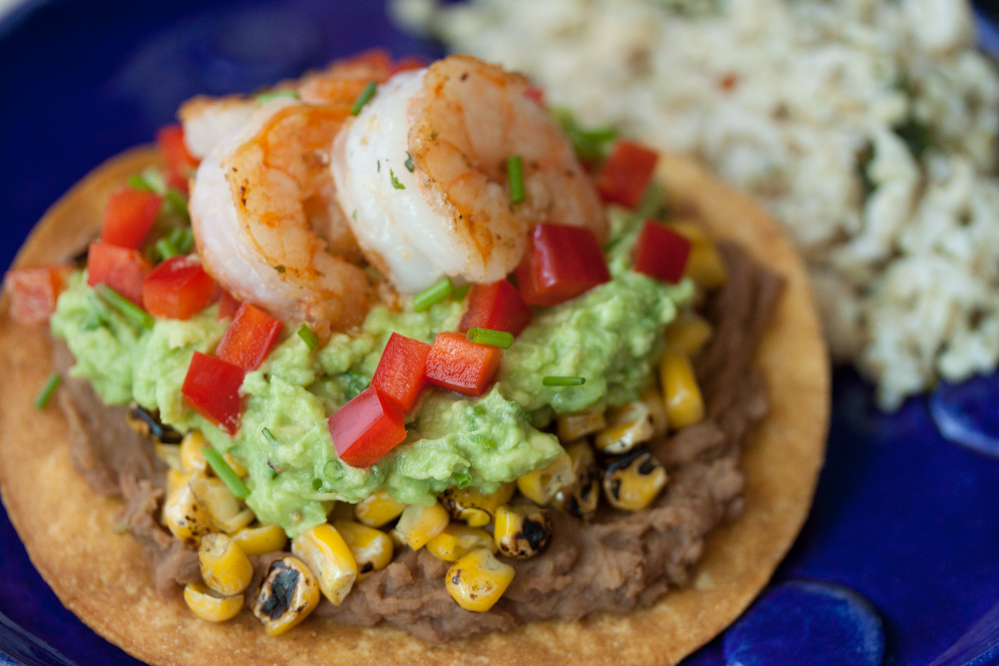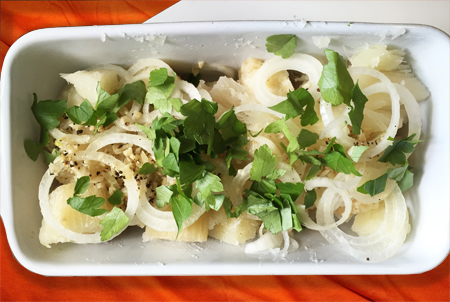¡Celebra! National Hispanic Heritage Month is celebrated annually from September 15th to October 15th and pays tribute to the history, culture, and traditions of Americans with Hispanic ancestry. Here at Oldways, we’re celebrating the month in traditional Oldways fashion: by focusing on food!
This month, we’re recognizing the tremendous impact that Hispanics have had on the ingredients and flavors around the U.S. From different ethnic cuisines to everyday fare, ingredients like cilantro, rice, salsa, avocados, tortillas, and spicy peppers (all Latino!) are now part of the American diet.
Every year, we at Oldways celebrate Latino culture and traditions not only because it involves delicious food, but also to build awareness about the fact that following a traditional Latin American diet can reduce the rise of chronic diseases facing the Latino community.
The Latin American Diet
So what is the Latin American diet, you ask As you can see from the Oldways Latin American Diet Pyramid, it is an eating pattern based mostly on plant foods like whole grains, fresh fruit and vegetables, beans and tubers, nuts, and plant oils. Including lean proteins like fish and chicken, milk, cheese and eggs, and some pork and beef, it is a tradition-based diet that includes regional and culinary differences while still providing a healthy way of eating based on science. Scientists have shown that following these traditional ways of eating reduces the risk of diabetes, heart disease, kidney disease, and different cancers.
Latinos and non-Latinos alike can benefit from the healthy and delicious Latin American diet. In fact, non-Latinos may also be interested in learning more about the traditional Latino diet and incorporating different flavors and spices. A few examples you can try:
- Download the Hispanic Heritage Calendar (English) (Spanish) and explore different ingredients and healthy tips for 30 days.
- Gather with your friends and family and cook a traditional Latin recipe and taste new ingredients and flavors.
- Use the Camino Mágico, a bilingual shopping guide and meal planner. Make a trip to the grocery store and walk through the Latino aisles and try something different.
- Order a poster of the Latin American Diet Pyramid. This month all our educational materials have a free shipping use code: SHIPFREE17. Offer expires 10/31/17!
- Read more about the foods of the Latin American diet in our toolkit about traditional heritage diets.
Try Out the Latin American Diet for Yourself!
Here at Oldways, we want to encourage Latino communities to bring healthy choices to the table and inspire everyone to reconnect with flavorful and healthy food traditions in order to improve health and well-being.
How do we do it By giving you some tips! After checking out some Oldways recipes, you can also turn your own Latin American dishes more healthy and traditional by using the following healthy swaps:
- Use non-fat, plain Greek yogurt instead of sour cream or heavy cream.
- Use homemade guacamole instead of store bought guacamole. Bonus points for using our guacamole recipe!
- Try whole beans instead of refried beansand make them from scratch!
- For more nutritious meals, buy whole-grain or corn tortillas instead of flour tortillas.
- When cooking, try to bake not fry your food.
- Use raw jalapeño peppers instead of pickled jalapeños. You’ll love the fresher and spicier flavor!
And, for a more specific challenge: Try cassava! It’s a staple tuber of African heritage, and is eaten in Latin America, West Africa, and the Caribbean, where its also known as manioc, mandioca, or yuca. Cassava is usually peeled and boiled like potatoes. It is eaten as a main vegetable or stew ingredient and is an excellent source of vitamin C and manganese. In recent studies, the phytochemicals, resveratrol and yuccaols, that are found in yuca have been shown to have antioxidant properties, linking them to cardiovascular disease prevention.
Try it baked and pair with chimichurri, an Argentinian sauce comprised mostly of parsley and olive oil or boiled with a garlic-lime sauce.
Happy National Hispanic Heritage Month!









Leave a comment